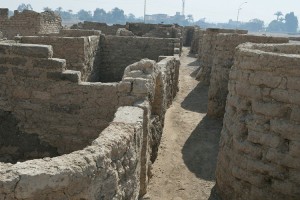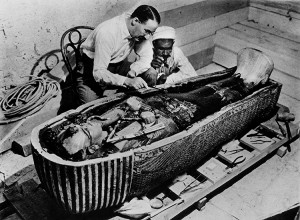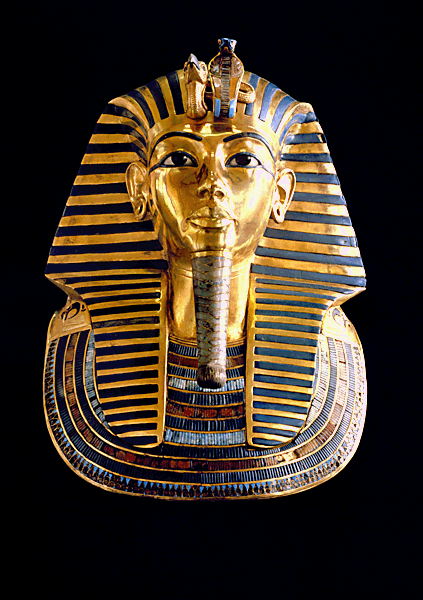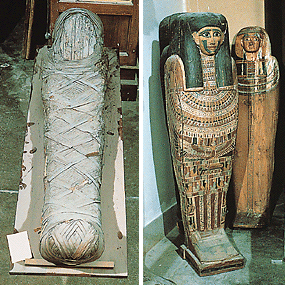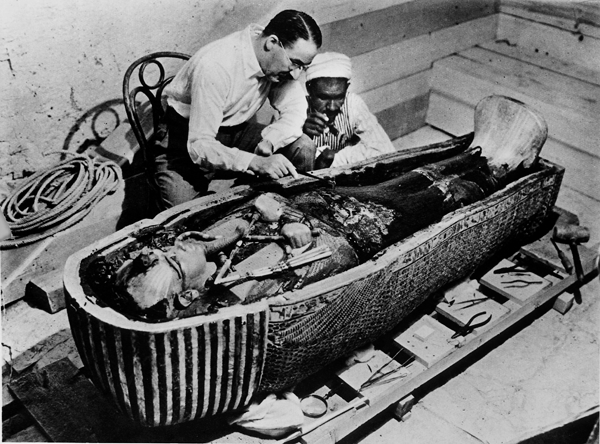Egyptian City Discovered
Thursday, May 6th, 2021In early April 2021, Egyptian archaeologists announced their discovery of a previously unknown ancient city that had been buried largely intact for thousands of years. The city, given the name Aten or The Rise of Aten, was built around 3,500 years ago near Egypt’s Valley of the Kings, a narrow gorge that was used as a cemetery by the pharaohs (kings) of ancient Egypt.
Egyptologists (scholars who study ancient Egypt) compared the importance of the discovery of Aten to the discovery of the tomb of Tutankhamun (sometimes called King Tut) in 1922. Others compare this site to Pompeii, an ancient city in Italy that disappeared after the eruption of Mount Vesuvius in A.D. 79. Like Pompeii, Aten promises to give scholars a rare and relatively complete view of the daily life of ancient Egyptian commoners. Most other important discoveries in Egyptology involve tombs of pharaohs and other wealthy Egyptians.
The remarkable site of Aten preserves the ruins of many homes built of mud brick walls about 9 feet (3 meters) high. Archaeologists also found the remains of tools and other utensils used in the daily life of ancient Egyptians along with jewelry, scarab charms, pottery, and tools for making bread, yarn, cloth, and glass. The number of homes and workshops at the site shows that the city had a large population. The archaeologists have discovered a number of burials that preserve the skeletons of some of the city residents. Unlike wealthy people in ancient Egypt, the burials of these commoners were not preserved as mummies.
Pottery found at the site bore an inscription that allowed scholars to determine it was manufactured during the reign of the pharaoh Akhenaten. He ruled ancient Egypt from about 1353 to 1336 B.C. His wife, Queen Nefertiti, was famous for her great beauty and her dedication to her husband’s teachings. Akhenaten was originally known as Amenhotep IV. He was the son of Amenhotep III, one of the most powerful pharaohs of ancient Egypt’s New Kingdom period (1539-1075 B.C.). During the New Kingdom, Egypt became the largest and strongest empire in the ancient world.
As pharaoh, Amenhotep IV was a religious reformer. He chose Aten as the only god of Egypt and dismissed the many gods and goddesses of the ancient Egyptian pantheon. Aten had been a little-known sun god worshiped mainly in the ancient Egyptian city of Thebes. Amenhotep was so devoted to the worship of Aten that he changed his own name to Akhenaten, meaning servant of Aten. Akhenaten’s religious reforms, known as the Amarna Revolution, led to an outpouring of art and sculpture that glorified the Aten. But the changes angered many Egyptians who wished to continue worshipping the old gods.
After the death of Akhenaten, his successor Tutankhaten removed -aten from his name and became Tutankhamun. He restored the old state religion, allowing the worship of the many old gods as well as Aten. Later pharaohs destroyed or removed all monuments built by or in honor of Tutankhamun and others who had accepted Aten as Egypt’s chief god. The city of Aten was abandoned and eventually became buried in the desert sand for more than 3,000 years until its rediscovery this year.

